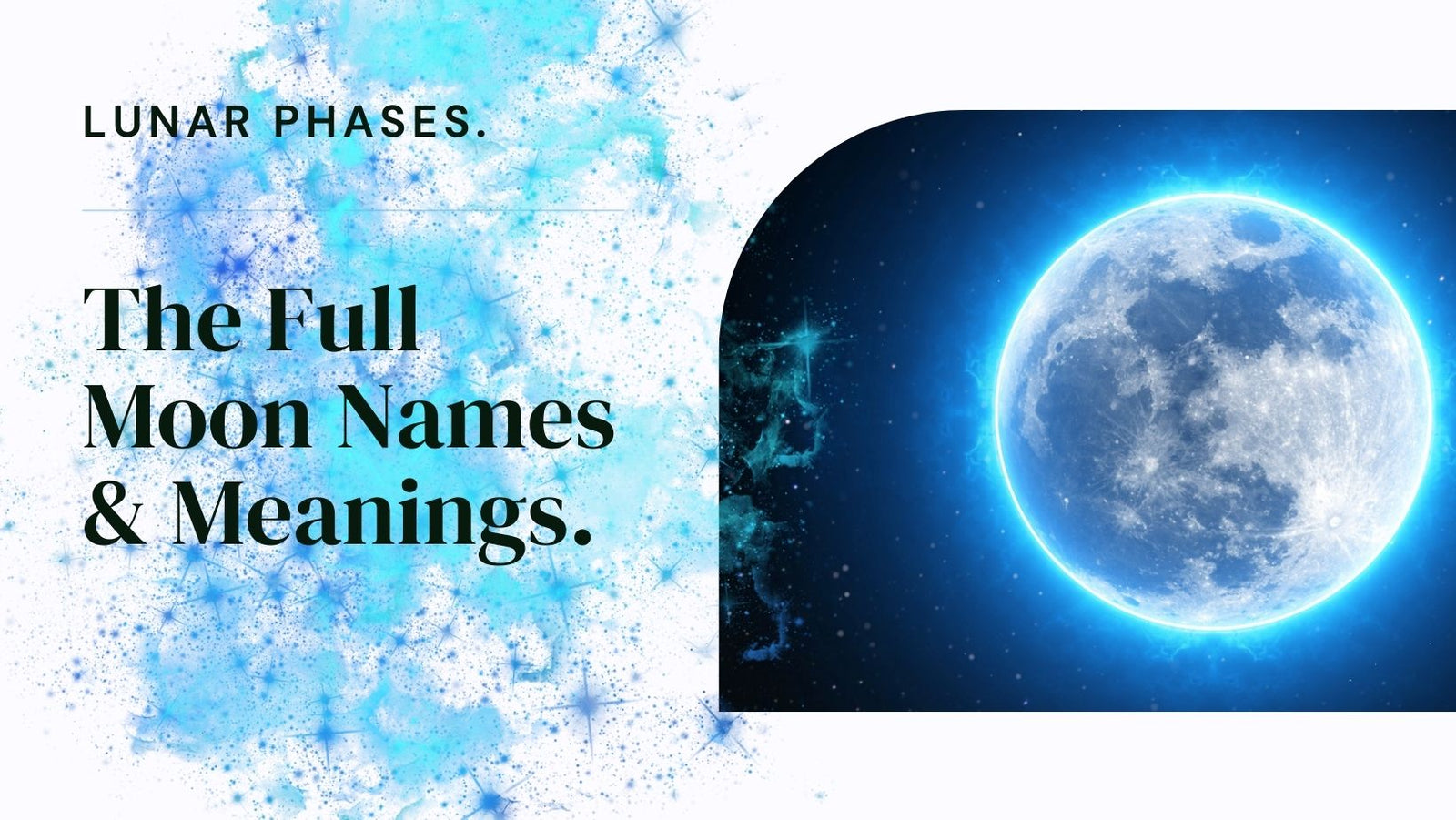
The Full Moon has been a source of wonder and inspiration for cultures around the world, each bestowing upon it unique names reflecting the changing seasons, natural phenomena, and cultural significance. Indigenous tribes, deeply connected to the rhythms of the Earth, have their own set of names for the Full Moons, each capturing the essence of the month's distinct character. Let's journey through the Full Moons of 2024, uncovering their Native American names and the rich tapestry of meanings behind them.

January: Wolf Moon
The January Full Moon is known as the Wolf Moon, named by various tribes, including the Algonquin tribes of the northeastern United States, because wolves were often heard howling more during this time of the year. This name encapsulates the communal and instinctual behaviors of wolves, symbolizing the importance of unity and survival during the harsh winter months.
February: Snow Moon
February's Full Moon is aptly named the Snow Moon, as it corresponds with the heaviest snowfalls of the year. This name serves as a reminder of the profound influence of nature on daily life and the importance of preparation and resilience in the face of winter's challenges.
March: Worm Moon
The March Full Moon is called the Worm Moon. The name and significance can be found among various tribes, particularly those in the Northeast, as it signifies the emergence of earthworms with the thawing of the Earth, signaling the coming of spring. This name celebrates the renewal and rejuvenation of the Earth, emphasizing growth, transformation, and the cycles of nature.
April: Pink Moon
April's Full Moon is referred to as the Pink Moon, inspired by the pink phlox flowers that bloom during this time of the year. This name highlights the beauty and vibrancy of spring, encouraging appreciation for the ephemeral yet impactful moments of life.
May: Flower Moon
May's Full Moon is known as the Flower Moon, representing the abundance of flowers blooming and the fertility of the Earth. This name evokes a sense of beauty, growth, and interconnectedness, reminding us of the Earth's capacity for renewal and creation.
June: Strawberry Moon
June's Full Moon is named the Strawberry Moon, signaling the time when strawberries are harvested. This name honors the bounty of nature and the importance of harvesting the fruits of one's labor, embodying themes of abundance, gratitude, and celebration.
July: Buck Moon
The July Full Moon is called the Buck Moon, named after the period when male deer regrow their antlers. This name emphasizes strength, renewal, and the cycles of nature, symbolizing the continuous process of growth and adaptation.
August: Sturgeon Moon
August's Full Moon is known as the Sturgeon Moon, marking the time when sturgeon fish are most readily caught. This name reflects the interconnectedness of humans and nature, highlighting the importance of sustainability, respect for wildlife, and the rhythms of the natural world.
September: Harvest Moon
September's Full Moon is the Harvest Moon, traditionally recognized as the time when crops are harvested. This name embodies themes of abundance, gratitude, and community, emphasizing the importance of hard work, cooperation, and the celebration of nature's bounty.
October: Hunter's Moon
October's Full Moon is named the Hunter's Moon, indicating the time when game is fattened and the hunting season begins. This name underscores the balance between humans and nature, emphasizing respect, reciprocity, and the interconnectedness of all living beings.
November: Beaver Moon
The November Full Moon is called the Beaver Moon, signifying the time when beavers become particularly active in preparation for winter. This name celebrates industriousness, preparation, and the symbiotic relationship between animals and their environment.
December: Cold Moon
December's Full Moon is known as the Cold Moon, reflecting the chilling temperatures and the onset of winter's grip. This name serves as a poignant reminder of the cycles of life, the importance of resilience, and the transformative power of introspection and preparation.
-
The Full Moons of 2024, with their Indigenous names, offer a profound insight into the intricate relationship between nature, culture, and spirituality. As we navigate through the changing seasons and celestial rhythms, let us embrace the wisdom embedded in these names, fostering a deeper connection with the Earth and honoring the timeless traditions of indigenous peoples.
It's important to note that while these names are commonly associated with specific tribes or regions, the diversity and richness of Native American cultures mean that multiple tribes might have different names or variations for the same moon, and some tribes may have their own unique names not listed here. Additionally, interpretations and attributions can vary among different sources and traditions.
*
Next time we'll be diving into how to align with the energies of each moon as its the perfect time to look back on what you've accomplished during the past month and enjoy the fruits of your labor, while letting go of things that no longer serve you!




Laissez un commentaire